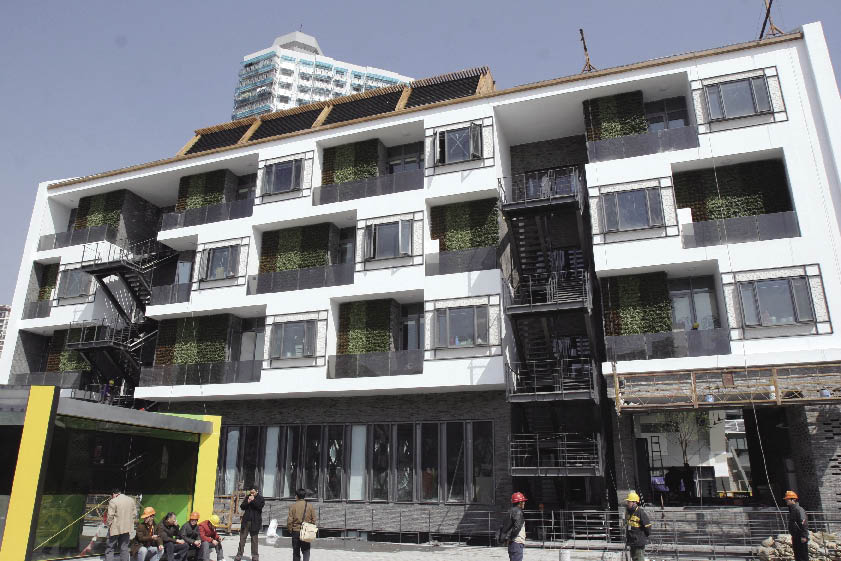| The City of Tomorrow
Urban Best Practices Area a Peek into the Future
By staff reporter GONG HAN
TEXT and the city – a lot is being said about Shanghai 2010, so let's not forget this is the first time in the past century and a half that a city has "attended" the World Expo as an independent participant. The Urban Best Practices Area on the southern bank of the Huangpu River is certainly making the most of that spotlight and is expected to be the highlight of the World Expo 2010. For an exhibition of 15.08 hectares (only 3 percent of the entire Expo space) this may seem ambitious, but the models of urban possible futures it represents will help put some flesh on the "Better City, Better Life" theme and demonstrate some means to those ends.
 |
|
"Eco-House in Shanghai" features 10 ecological technologies, such as natural ventilation and lighting, renewable energy sources, recyclable water sources, and green building materials. |
Global-City Paradigms
After Shanghai won the bid to host the World Expo 2010, the organizer proposed to add this "urban practices area" in its registration report to the International Exhibition Bureau. The Urban Best Practices Area (UBPA) existed on paper.
Then Vicente Loscertales, secretary general of the International Exhibition Bureau, saw to it that the creation of the UBPA introduced a whole new level of participants – cities – to the World Expo. He dubbed the municipal a "marvelous dimension" that juxtaposes the wisdom of urban settlements around the world and showcases exemplary practices and solutions that will inspire more ideas on city design and management.
In May 2007, the Shanghai organizer began to solicit and select UBPA participants from around the world. Qualifying criteria were based on three principles. First, selected best practices must be universal, innovative and paradigmatic; second, they should contribute to a balance in terms of representation of different parts of the world, and different approaches to solutions; and third, the way they display their practices should have the power to appeal to a broad stratum of visitors.
Eighty cases have been selected, and their concepts have come to life in the UBPA as showcases for the city of the future.
The main division of the UBPA is a comprehensive urban district that simulates the lifestyle of a future urban settlement – how people could live, work, travel, and recreate. Visitors will see exemplary urban practices in dense habitation and the mitigation of environmental problems for a sustainable way of life.
Most of the model cities are world-famous for their success in providing urban convenience, conserving ecological environments and maintaining urban efficiency and sustainable development; they are a source of pride to their citizens.
Germany's Bremen, for example, demonstrates the practice of transport resource-sharing. Through a rental system, a citizen's private vehicle can be shared by other people, thus reducing the number of cars on the street and the entailed pollution pressure on the environment. The city has also introduced cars that use wind power as an alternative energy source.
Microsoft's "School of the Future" in Philadelphia, U.S.A. is served by a powerful wireless network that provides a paperless education venue for its students.
The brand-new "24-hour Sun newspaper headquarters" of Italy's Milan is installed with window blinds that use sustainable materials and technology; they can open and close automatically and collect energy by methods that adapt to the season.
| 